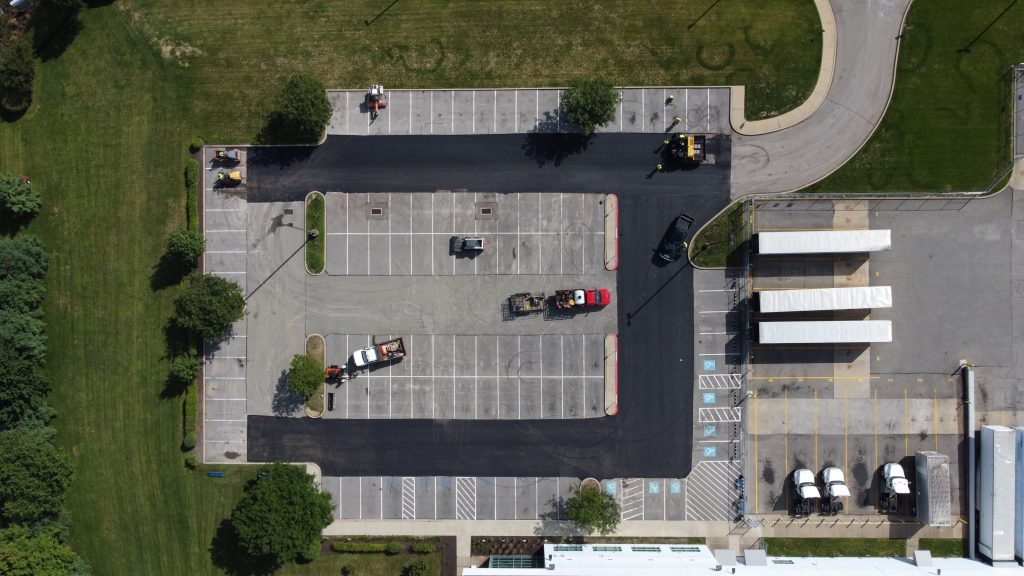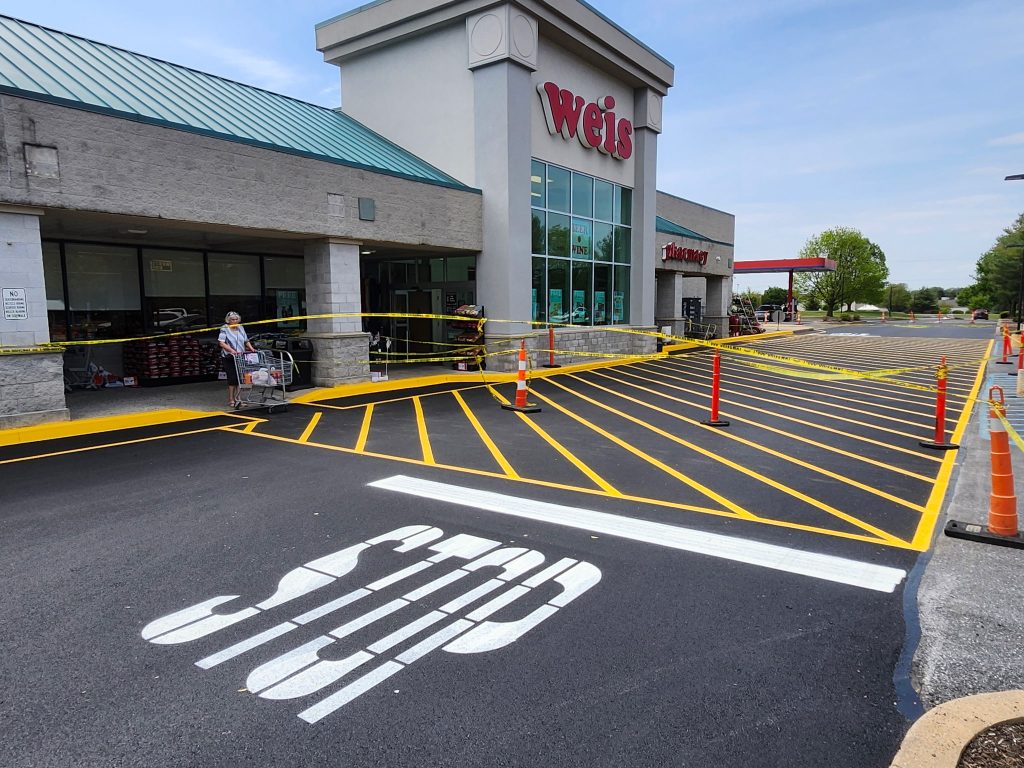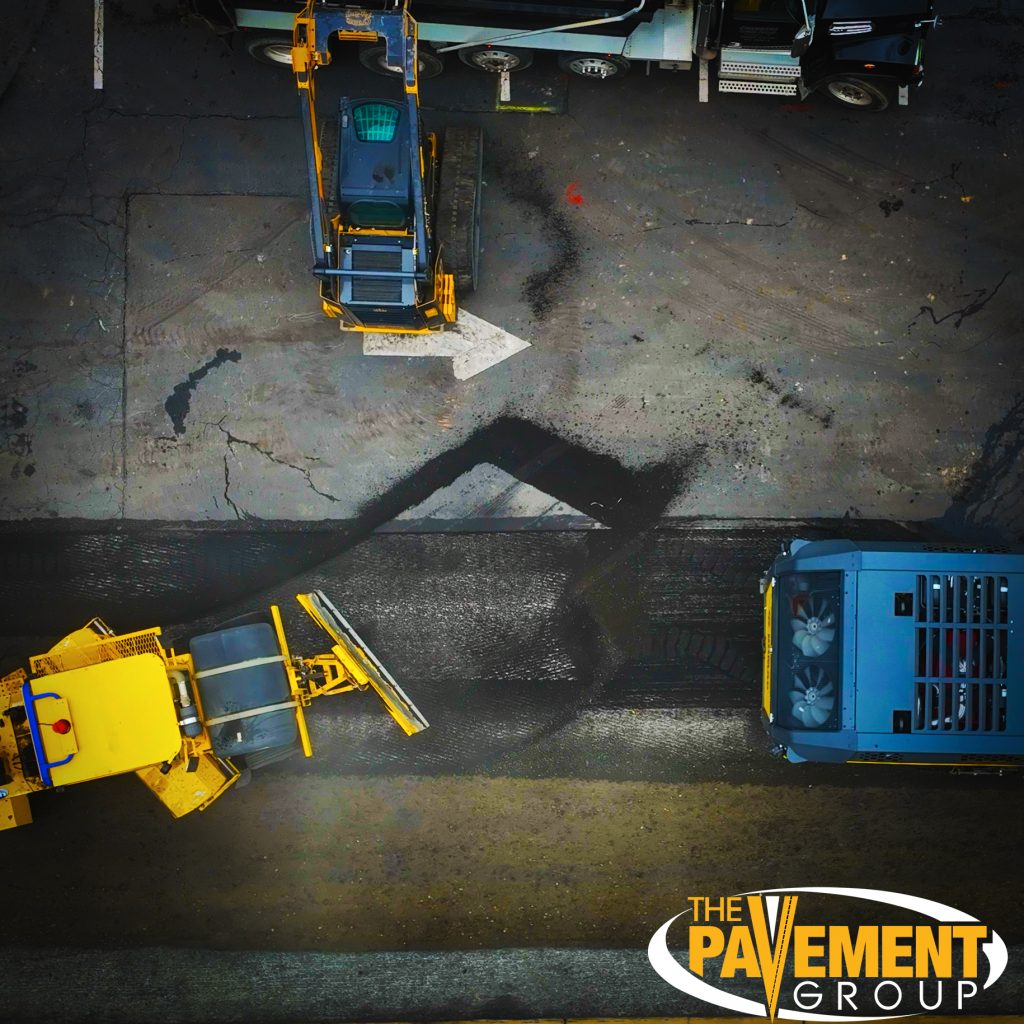Every retail business wants customers to feel welcome, comfortable, and safe the moment they arrive. One of the most important steps toward achieving that goal is maintaining ADA compliance for parking lots. For retail property owners, accessibility isn’t just about good customer service. It’s a legal requirement that protects your business and builds trust. ADA compliance retail parking lots
At The Pavement Group, we specialize in helping businesses meet ADA parking lot standards through professional paving, striping, and signage solutions. Our goal is simple: make compliance clear, easy, and effective for every client.
Why ADA Compliance Matters in Retail Parking Lots?
ADA compliance ensures that people with disabilities can access your retail property without barriers. Parking spaces, ramps, and pathways must meet specific measurements and design standards. These guidelines were created to promote safety and equal access for all customers.
Failure to comply can lead to costly fines and legal issues. Beyond the legal risk, neglecting accessibility can harm your brand reputation. Customers remember when businesses go the extra mile, and they also notice when they don’t.
By keeping your parking lot ADA-compliant, you’re not just following regulations; you’re showing genuine care for your community.
Understanding Key ADA Parking Lot Requirements
1. Accessible Parking Space Dimensions
Every retail property must include designated accessible parking spaces. Standard accessible spaces must be at least eight feet wide with an adjacent five-foot access aisle. Van-accessible spaces require a wider eight-foot access aisle for additional room.
2. Proper Signage and Markings
Each accessible parking space must feature the International Symbol of Accessibility clearly displayed. Van spaces must also include signage reading “Van Accessible.” Signage must be visible even when vehicles are parked in the space.
3. Slope and Surface Standards
Surfaces in accessible areas must be smooth and stable. The maximum slope allowed is 1:48 (2%) in any direction. Uneven pavement or cracks can make access difficult and violate compliance standards.
4. Accessible Route to Entrances
From the parking lot to your store entrance, there must be a continuous, accessible route. This means no curbs, obstructions, or steep slopes blocking the way. Proper ramps and tactile warning surfaces help guide those with mobility or vision challenges.
The Cost of Non-Compliance
Ignoring ADA parking requirements can result in penalties and expensive legal action. Fines can reach up to $75,000 for the first violation, and additional violations may cost even more.
But the financial impact isn’t the only concern. Non-compliance can also lead to lost customers and a damaged reputation. People tend to support businesses that prioritize inclusivity and accessibility.
For retail stores, shopping centers, and franchises, a compliant parking lot isn’t just a requirement. It’s a business advantage.
How The Pavement Group Ensures ADA Compliance
Our team takes a proactive, detail-oriented approach to ADA compliance. From design to final striping, we ensure every element meets national and state standards.
Step 1: Site Evaluation
We begin with a full assessment of your existing parking lot. Our team checks slope measurements, layout accuracy, and signage placement.
Step 2: Design and Planning
Using precise specifications, we design a plan tailored to your property’s layout and customer flow.
Step 3: Implementation
Our paving professionals handle all asphalt work, resurfacing, and line striping. We use high-quality materials for long-lasting results.
Step 4: Final Inspection
Before finishing, we review every detail to confirm full ADA compliance. You receive documentation outlining the updates and standards met.
With The Pavement Group, you’ll have peace of mind knowing your property is accessible and legally sound.
“Professional and Reliable Every Step of the Way!”
“We needed to update our parking lot to meet ADA standards. The Pavement Group made everything simple. Their team handled design, striping, and compliance documentation flawlessly. The process was smooth, fast, and stress-free.”
— Lisa T., Retail Store Owner, Pittsburgh
“They Delivered Exactly What We Needed!”
“Our parking lot was overdue for an ADA upgrade. The crew was punctual, respectful, and incredibly knowledgeable. Now our customers notice the difference, and so do we.”
— David R., Shopping Center Manager, Columbus
Positive feedback like this reminds us why we do what we do. Helping businesses create safe, compliant, and welcoming spaces.
The Role of Maintenance in Ongoing Compliance
Even if your parking lot meets ADA standards today, ongoing maintenance is essential. Over time, paint fades, signs become damaged, and surfaces deteriorate.
Keep Your Lot in Top Condition
- Repaint lines regularly to maintain visibility.
- Inspect slopes and ramps annually for cracks or uneven areas.
- Replace damaged signage as soon as possible.
Neglecting these small tasks can lead to big problems later. Routine upkeep not only maintains compliance but also enhances curb appeal and customer satisfaction.
The Business Benefits of Being ADA-Compliant
An ADA-compliant parking lot does more than meet regulations. It enhances your brand and customer experience.
- Improved Accessibility: Everyone can enter your store comfortably and confidently.
- Increased Foot Traffic: Shoppers are more likely to visit accessible locations.
- Enhanced Reputation: Customers appreciate businesses that care about inclusivity.
- Reduced Liability: Compliance minimizes the risk of fines or lawsuits.
In short, ADA compliance supports your business’s growth, values, and community reputation.
Ready to make your retail parking lot ADA compliant?
Contact The Pavement Group today for a professional assessment and personalized quote. Let’s pave the way to accessibility, one parking space at a time! At The Pavement Group, we handle everything—from the first assessment to the final line of paint. Our team combines technical precision with practical expertise, delivering reliable results for every project.
Frequently Asked Questions
1. What does ADA compliance mean for retail parking lots?
ADA compliance ensures that retail parking lots are accessible to all individuals, including those with disabilities. It involves meeting federal design standards for parking spaces, ramps, and pathways. Proper compliance improves safety, accessibility, and customer satisfaction.
2. How many accessible parking spaces are required in retail parking lots?
The number of accessible spaces depends on the total parking spaces available. Typically, one of every 25 spaces must be ADA-compliant. Larger lots require additional accessible spaces, including designated van-accessible areas.
3. What are the dimensions for ADA-compliant parking spaces?
Standard accessible spaces must be at least eight feet wide with a five-foot access aisle. Van-accessible spaces need an eight-foot access aisle for extra clearance. These dimensions ensure safe and easy mobility for all users.
4. What type of signage is required for ADA parking spaces?
Each accessible parking space must display the International Symbol of Accessibility on a visible sign. Van-accessible spots also require signage labeled “Van Accessible.” Signs must remain visible even when vehicles are parked.
5. What is the maximum slope allowed for ADA-compliant parking areas?
The ADA requires accessible parking spaces and access aisles to have a slope no greater than 1:48 (about 2%). This gentle incline allows wheelchairs and walkers to move safely. Uneven or cracked surfaces can lead to non-compliance.
6. How often should retail parking lots be inspected for ADA compliance?
Retail parking lots should be inspected annually or after any major resurfacing. Regular inspections ensure lines, ramps, and signage remain compliant. Weather and traffic can cause wear that impacts accessibility over time.
7. What are the penalties for not meeting ADA parking requirements?
Non-compliance with ADA regulations can result in fines of up to $75,000 for the first violation. Repeat offenses can incur higher penalties and potential lawsuits. Staying compliant helps avoid costly legal and financial consequences.
8. How can retailers maintain ADA compliance over time?
Routine maintenance is essential to keep parking lots ADA-compliant. Repainting faded lines, repairing cracks, and replacing damaged signage should be done regularly. Ongoing attention ensures accessibility and prevents violations.
9. What are the most common ADA violations in parking lots?
Frequent violations include missing signs, faded paint, improper slopes, and insufficient access aisles. These issues create barriers for customers with disabilities. Regular evaluations and repairs prevent these costly mistakes.
10. Why is ADA compliance important for retail businesses?
ADA compliance demonstrates a retailer’s commitment to inclusivity and customer care. It helps attract a broader customer base and strengthens brand reputation. Beyond legality, it ensures equal access for everyone visiting your property.


